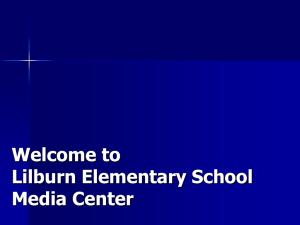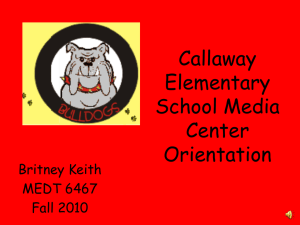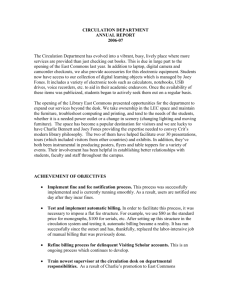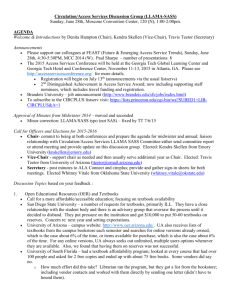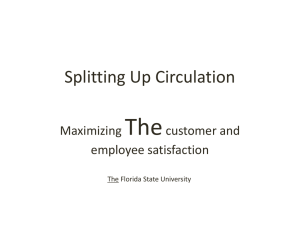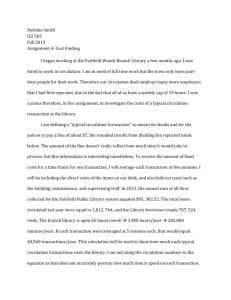Avoiding Garbage Data
advertisement
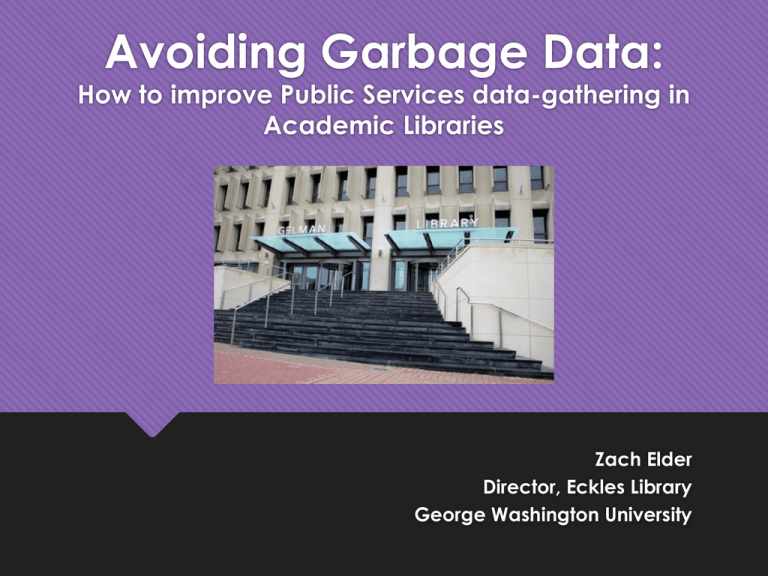
Avoiding Garbage Data: How to improve Public Services data-gathering in Academic Libraries Zach Elder Director, Eckles Library George Washington University What is garbage data? Garbage in, garbage out (GIGO); computers will unquestioningly process the most nonsensical of input data (garbage in) and produce nonsensical output (garbage out) Garbage in, Gospel out: tendency to put excessive trust in "computerized" data, and on the propensity for individuals to blindly accept what the computer says. Because the data goes through the computer, people tend to believe it. How does data become garbage? Technology failure Incompleteness Data-gatherers not understanding “why” or “how” Data gathering techniques not keeping up with changes in services or technology Failure to use good data to change services Technology failure Entrance statistics: gatecount New renovation = new gates = new system System is easy to use, gathers data perfectly for students and others with a University ID What about everyone else? Solution New visitor management software that will link to existing data-stream, providing the full picture Incompleteness Reference statistics Libstats: a simple, customizable tool to help keep track of reference transactions Every reference desk question logged Is the ref desk (now called the “Ask Us” desk) the only place questions are asked? Incompleteness Solution: categories modified, libstats rolled to all service points (Circulation desk, branch libraries) 1% Questions by Type September to October 2013 11% 20% CIRC. Access. CLS/ILL Referral Complex Reference Data Driven 0% 29% Directional/Technical Librarian Referral Other Dept. Referral (SCRC/GRC/etc.) Simple Reference Specialized/In-depth Research 36% 2% 1% Data gathering not keeping up with changes in services or technology In raw data, it looks like circulation is decreasing “these kids today aren’t using books.” But through observation, we found patrons using more materials in the library--not checking them out We created spaces so enticing that patrons write their entire papers onsite, but didn’t change our datagathering methods Problem: we only make collections decisions based on circulation data. These items weren’t being recorded in any way, just being reshelved. Solution: In-house Milhouse Dummy patron created April 11, 2014 As of 11/1/ 2014, over 12,000 circulated items We were undercounting by around 10% Affected collection development Best practices for Assessment Consider all of your data sources Consider all your data gatherers Don‘t rely on quantitative stats alone: Qualitative data Patron Surveys Observation Best practices for data gathering Gather and report data holistically “layer” data, work to create complementary systems Have one staff member, or a small committee who collects all of the data Know how each piece of data is collected Create an annual report Considering the Data: Quantitative Entrance gate counts Circulation ILL and Consortium loans Printing Computers-in-use Reference desk statistics Room reservation system Considering the Data: Surveys Post-renovation, students at library more often, staying longer Faculty satisfied with staff, services, and space. Dissatisfaction with physical and digital collections Considering the data: Observation Locations Study spaces Circulation desk Information Commons Student lounge area Printers and scanners Frequency Times: early morning, afternoon, late evening All 7 days per week over a 2 week period (during mid-term exams) Using Your Data for positive change Findings Quantitative findings Circulation desk busiest between 2 and 7pm In-depth reference questions greatly decreased Qualitative findings Faculty wanted earlier circulation hours for bookpick up services [Students did not want go to different floors for library services] Decisions Circulation hours adjusted to accommodate busiest periods and faculty requests Reference hours reduced Student assistants and circulation staff trained to troubleshoot reference questions Writing Center, tutoring, and other library services incorporated in one space E-Book Holdings and Special Collections Low student awareness of these collections Created displays to highlight collections Created bookmarks to increase access to e-book collections Scanning Stations and Computer Workstations Scanners were at 100% usage, despite significant increase for the renovation Added more scanners and redistributed them Computer workstations were operating at full capacity Doubled number of workstations Still full during peak hours Questions? elder@gwu.edu @LibrarianZach 202-242-6621
